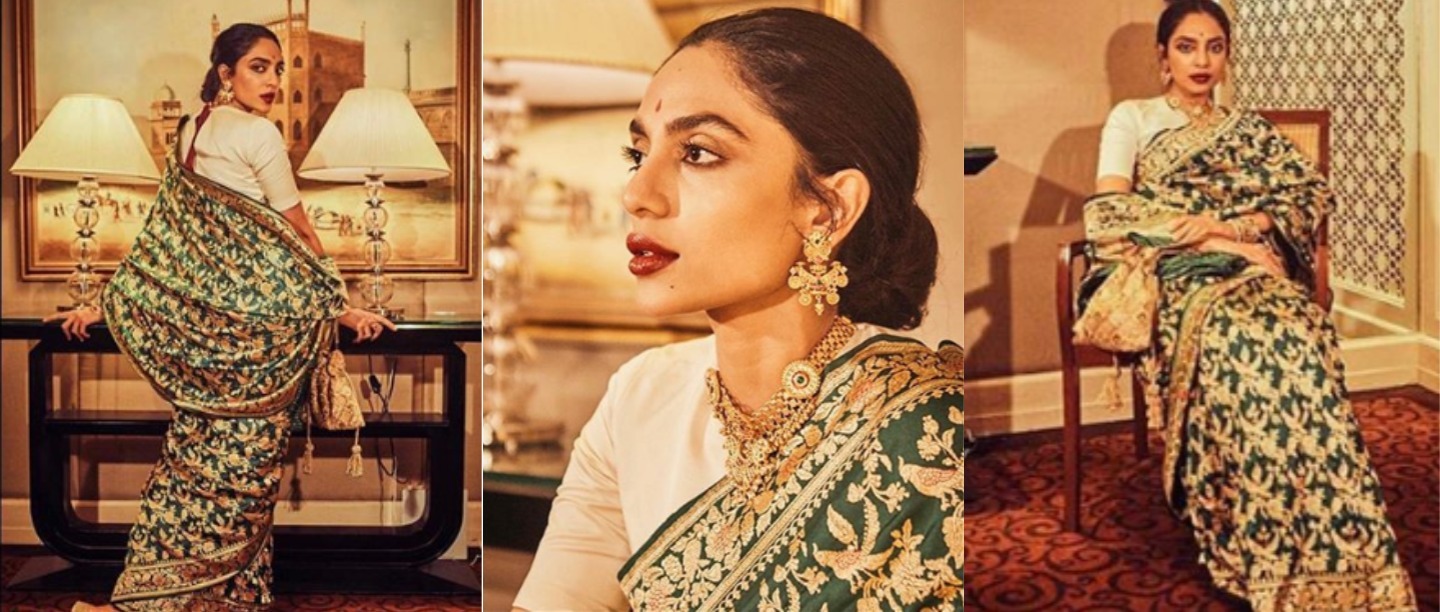
Not just India, but people from all over the world throng the fabled shores of Varanasi for a number of reasons: curiosity, bewilderment, and, more often than not, pure reverence. And while films have been made on the significance of the holy ghats of this ancient city, there’s more to it.
That Banarasi sarees are woven in Varanasi is a well-known fact. And so is the fact that lakhs of artisans work day in and day night to create the world-renowned Banarasi brocades. The reputation of these silk weaves stands as intact as the ancient city so much so that they are often displayed at exhibitions across the world. The Great Exhibition of London in 1851 is a fine example of the same. However, there’s so much more that remains largely unknown. Especially the hard work of the artisans that goes into making these weaves.
Now, as the fashion industry collapses under the looming shadow of the novel coronavirus, it’s the artisans who’ll have the worst. So once it’s over, it is our craftsmen who’ll need our support the most. Thankfully, it is as easy as purchasing a gorgeous garment from a website or agency that supports them and pays them a considerable cut. This explains why it is important to look into the working of these handloom industries, now more than ever.
So before this lockdown is a thing of the past, we at POPxo have decided to extend our support to these dedicated artists by delving into the stories of these beautiful handicrafts. Willing to join us in this endeavour to uplift the Indian handicrafts and handlooms? Read on:
Banarasi Handloom: The Dark History Of The Golden Weave
The rich, decades-old crimson Banarasi in your grandma’s cupboard has a history associated with famines. While we have all heard legends about Banaras being an ancient weaving hub, till the 16th century it was mostly cotton.
During the medieval period, the weavers from Gujarat fleeing to the ghats of Banaras so as to escape famines, fires, and floods. The styles parallels between Ahmedabad’s Ashavali fabrics, Surat’s brocades and Banarasi brocades give fodder to this theory. The use of zari in all of these fabrics further strengthens the idea.
Into The Making Of An Exquisite Banarasi
It is the use of a pit loom to weave Banarasi brocade that provides them with their fine appeal. While the threads these days are laid on a jacquard frame, in the earlier times a jangla was used for the same purpose.
Now is when warp and weft come in, the process components through which yarn gets converted into fabric. To put in layman’s terms, warp and weft are nothing but embroidery terms that decide the direction of threads and how they go into the making of a fabric. Now, in any handloom fabric while warp yarns are held longitudinally and stationary in tension on the loom, it is the weft threads that run above and below them to give the desired texture to the fabric. However, in Banarasi Brocade, a zari thread is worn around smaller hand spinning rods. This is what brings out the true beauty of a Banarasi.
Interestingly, just like the craft itself, neither the yarn nor the zari threads are indigenous to Varanasi. While the yarn used for the textile mostly comes from Bengal, Kashmir, Karnataka, Japan and China, the zari comes from Surat, the hub for metallic threads in India.
Bollywood & Banarasis
The gorgeous weave became an easy choice for Aishwarya Rai’s Paro in Devdas after she was married off in an affluent family. And, remember the gorgeous blur-pink Banarasi worn by Alia Bhatt in Raazi? Of late, everyone from Deepika Padukone to Alia Bhatt can be seen sauntering in the luxurious Banarasi weaves because say what you may but there exist a few garments as fine as the golden weaves of Banarasi brocade.
The Art And The Artist
Every time we say Banarasi artisans, we effectively wipe out a diversity of artists and craftspeople who are involved in the finishing of these exquisite weaves. The process actually starts with someone called a naqshaband, a craftsperson who uses his aesthetic sensibilities to draw out the directions for the creation of each and every weave. This naqsha (map) requires great expertise for even the tiniest of the mistakes can lead to a disoriented pattern and motifs in the saree. Once the basic map is drawn, the weaver cannot operate the loom all alone and needs assistants who work on the threads for the creation of patterns. Meanwhile, the women from these artisan families work on the finishing touches of the textile and add tassels and other adornments when the design calls for it.
Reading about these artisans is the first step to know them and then to appreciate them for their impeccable craft. Rich and opulent, the luxurious craft of Banarasi brocades owes it to generations and generations of artisans who have upheld its beauty through decades now. If you’ve ever been able to enjoy the rich beauty of this craftsmanship then it is time to do your bit by investing in their craft once the lockdown days are over!
Featured Image: Instagram
Read More From Celebrity Style
Ranveer Singh’s Insane Car Collection: From Swanky SUVs To Speedy Sports Cars
Isha Jain